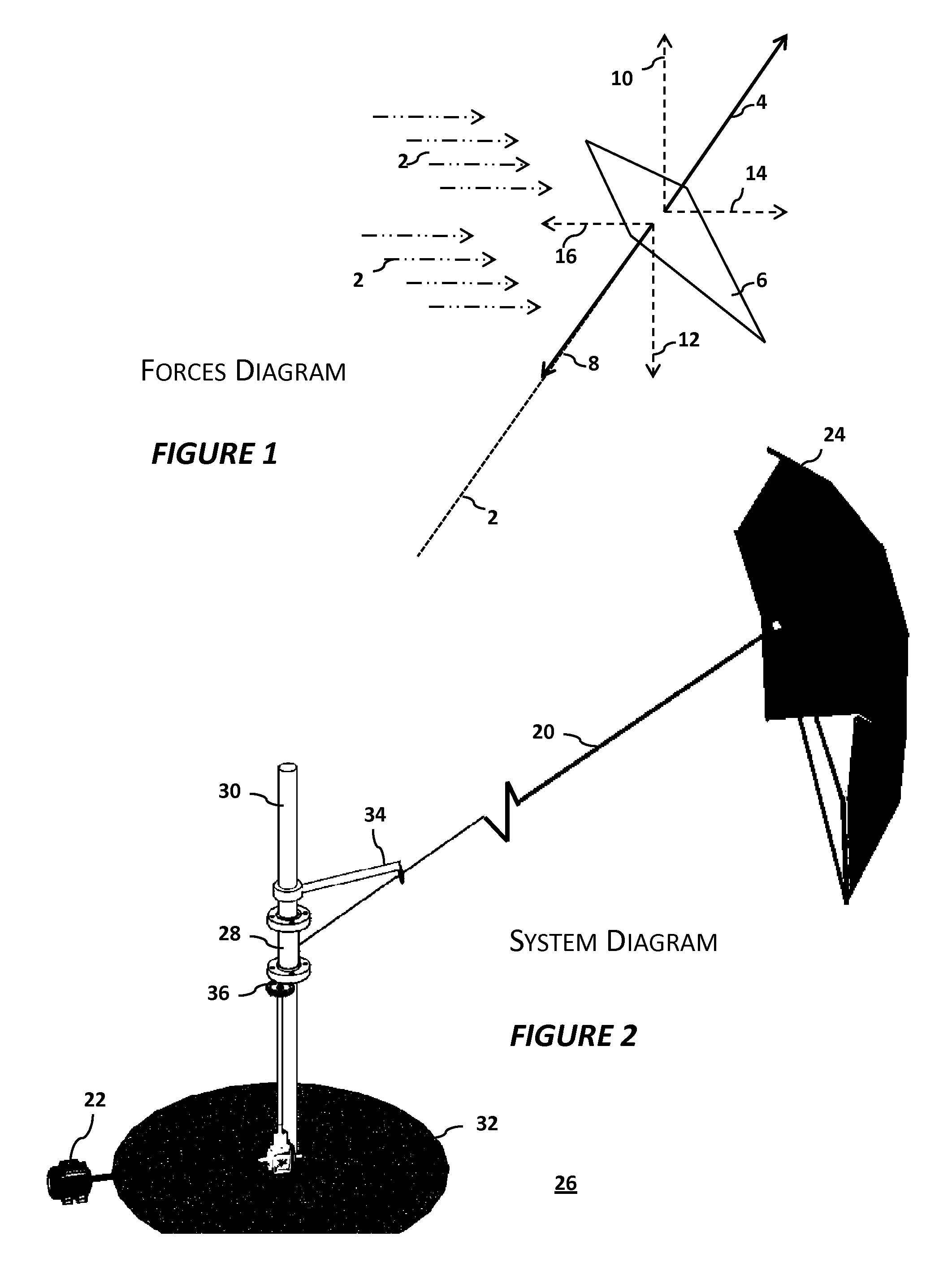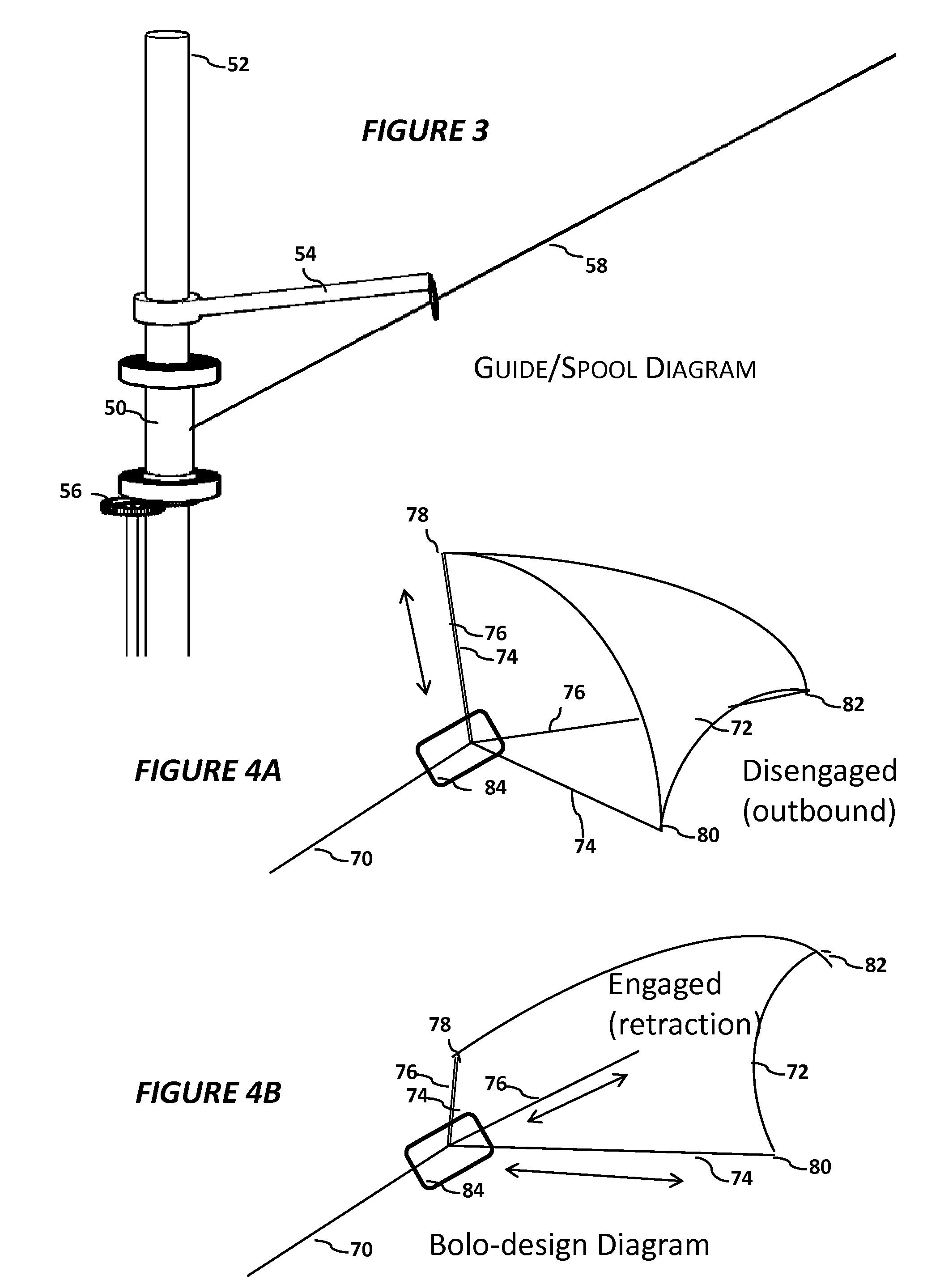System and method for harnessing wind power at variable altitudes
a technology of wind power and variable altitude, applied in the direction of electric generator control, machines/engines, mechanical equipment, etc., can solve the problems of inconvenient operation, inability to sustain and effective power production in the near-ground environment, and inability to meet the needs of sustainable and effective power production, etc., to achieve maximum tensile strength, minimize energy loss in the system, and high specific strength
- Summary
- Abstract
- Description
- Claims
- Application Information
AI Technical Summary
Benefits of technology
Problems solved by technology
Method used
Image
Examples
Embodiment Construction
[0022]While making and using various embodiments of the present disclosure are discussed in detail below, it should be appreciated that a preferred embodiment provides many applicable inventive concepts, which may be embodied in a wide variety of specific contexts. The specific embodiments discussed herein are merely illustrative of specific ways to make and use the present disclosure and do not delimit the scope of the present disclosure.
[0023]The present disclosure involves using a wind capturing structure (a kite) to power a system that produces electrical energy in the most simple and efficient way. FIG. 1 shows that the system relies on wind 2 causing wind force 4 on kite 6. Kite 6 remains in flight by flying at an angle to the anchor (in recreational kites, the anchor may be the user); wind force 4 occurs in the opposite direction of the anchoring line 8. To be effective, wind force 4 must create enough force that vertical wind force component 10, referred to as “lift” is equa...
PUM
 Login to View More
Login to View More Abstract
Description
Claims
Application Information
 Login to View More
Login to View More - R&D
- Intellectual Property
- Life Sciences
- Materials
- Tech Scout
- Unparalleled Data Quality
- Higher Quality Content
- 60% Fewer Hallucinations
Browse by: Latest US Patents, China's latest patents, Technical Efficacy Thesaurus, Application Domain, Technology Topic, Popular Technical Reports.
© 2025 PatSnap. All rights reserved.Legal|Privacy policy|Modern Slavery Act Transparency Statement|Sitemap|About US| Contact US: help@patsnap.com



